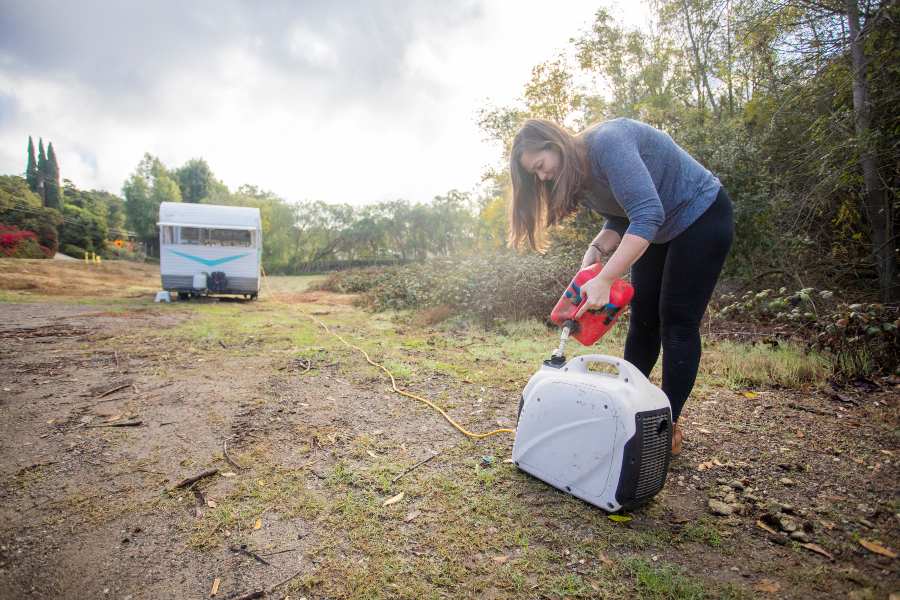February 20, 2024
Where and How to Safely Position Your Generator

Are you thinking of installing a generator? Ensuring safe and efficient operation begins with proper placement. This guide will walk you through generator placement tips to help you pick out the best location for outdoor generator safety.
The Importance of Safe Generator Positioning
Most generators are combustion appliances that burn natural gas, gasoline, or other fuels to generate electricity. As such, they produce carbon monoxide as a byproduct of incomplete combustion. This colorless, odorless gas can be deadly if inhaled at high enough concentrations, underscoring the necessity of safely positioning a generator outdoors.
In short, you should never operate a generator inside. Even partially enclosed spaces like garages or sheds are off-limits. The proper generator location is outside, far from windows, doors, and vents, to prevent carbon monoxide from wafting into your living space.
Generator Ventilation Requirements
Your generator needs ample room to “breathe” and disperse heat effectively. A minimum clearance of 3 feet around the front and sides of the generator is recommended. This spacing ensures adequate airflow and reduces risks associated with overheating. It’s also important to maintain a clearance of at least 1.5 feet at the back of the generator for optimal operation.
Site Preparation
When deciding where to put your generator, consider the terrain and environmental conditions. A level pea gravel or concrete base provides stability. A raised pad may be desirable to protect the generator from floodwater. In addition, consider the proximity to the fuel source. For instance, if you choose a natural gas generator, locating the generator near your home’s natural gas line may reduce installation costs and improve efficiency.
Fueling Safety and Fire Hazards
Generator outdoor placement is also important for fueling and fire safety. If you have a gasoline generator, you must refill the tank manually. Be careful not to overfill, as this can lead to spills on a hot engine. To avoid fire hazards, always refuel the generator when it’s cool and store gasoline in a safe, dry place away from ignition sources. Regular maintenance and inspections help mitigate the risks associated with fuel leaks or spills.
Electrical Safety and Connection Guidelines
Electrocution is a serious risk when working with generators. Never connect your generator directly to your home’s wiring without the proper transfer switch. Doing so can cause backfeeding, which poses serious hazards to utility workers and your electrical system. Always use appropriate, heavy-duty extension cords with portable generators to prevent overheating and electrical fires.
Contact Seidel Electric Inc.
Now that you understand the recommended generator placement guidelines, you may be ready to install one in your Tri-State Area home. Seidel Electric Inc. would be happy to help. Our experienced electricians can ensure your generator is positioned and installed correctly, adhering to all safety guidelines. As a Certified Select Generac PowerPRO Dealer, we supply some of the industry’s most trusted and long-lasting generators. We’re also actively involved in our community, reflecting our dedication to the people we serve. For personalized guidance in selecting the best location for your generator, please contact us at (908) 362-6191.
